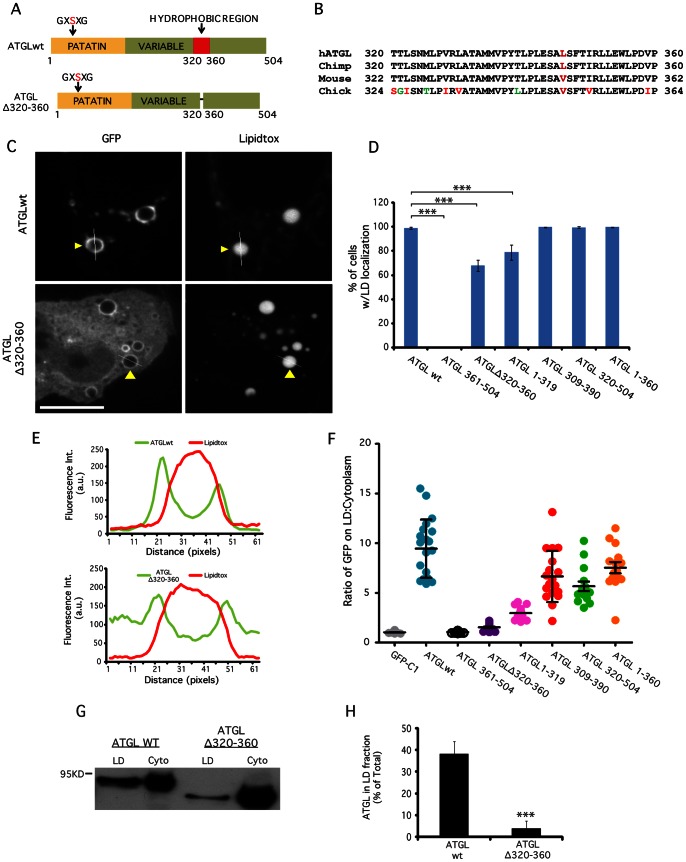Figure 6. ATGL has a hydrophobic LTM.
(A) A schematic diagram of ATGL depicting the putative hydrophobic LTM region within the long variable C-terminal domain. (B) Species comparison of sequences in the hydrophobic domain (residues 320–360) of ATGL orthologs. Black amino acids = identical, Red = similar, Green = unique. (C) HeLa cells were treated overnight with OA, transfected with the indicated constructs for 24 h, fixed, and stained with LipidTOX Red. Cells were then analyzed by fluorescence microscopy and scored for LD localization. Bar, 5 μm. Expression of full-length ATGL lacking the hydrophobic region (residues 320–360) in HeLa cells resulted in a decreased LD surface signal and an increased cytoplasmic signal; (D) GFP-tagged N-terminal truncations lacking residues 1–319 or a C-terminal truncation lacking residues 361–504 (but containing the hydrophobic region) were able to localize to LDs at wildtype levels; an N-terminal truncation lacking residues 1–360 (missing hydrophobic region) did not localize to LDs at all. Expressing either full-length ATGL lacking the hydrophobic residues 320–360 or a C-terminal truncation lacking residues 320–504 (found in NLSDM patients) resulted in reduced LD localization. Data are plotted as means ± SEM; ≥3 experiments/condition, ≥300 cells counted/experiment. ***indicates p<0.0001. (E) Fluorescence intensity line plot profiles from line plots in C (see arrowheads for lines). (F) Quantitation of LD surface:cytoplasm intensity ratio from line intensity plots for all ATGL constructs (plotted as mean±SEM, ≥20 LDs and cells/condition). (G) HeLa cells were treated as in ‘A’ except transfections were followed by cell fractionation. Wildtype ATGL, but not ATGL lacking the hydrophobic residues 320–360, was enriched on LDs as shown by western blotting of isolated LD fractions in comparison to pooled cytoplasmic fractions (cyto); quantitation in (H). Data are plotted as means ± SEM, n = 3.

